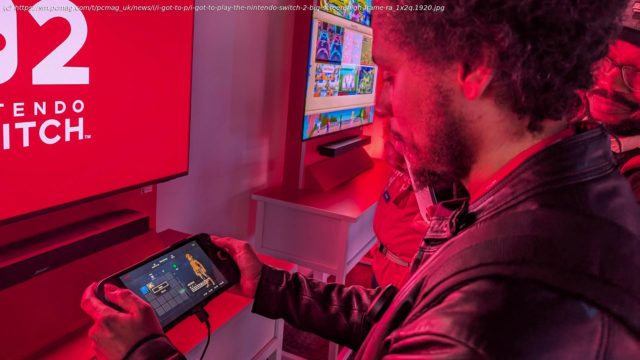I spent hours with the Switch 2, its new mouse-enabled Joy-Cons, and several big games, including Mario Kart World and Metroid Prime 4: Beyond. Check out my impressions before pre-orders go live at midnight.
The $449 Switch 2 hits storefronts on June 5, with pre-orders going live even sooner: midnight, April 24. Nintendo has revealed exciting information about the Switch 2 that I experienced firsthand. Yes, I’ve held it, played several launch games, and poked and prodded at the new Joy-Con controllers. My early thoughts? The Switch 2 has some of the sharpest, smoothest graphics I’ve ever seen on a Nintendo system, and it feels just as good to play as the Switch 1.Design: A New Look and Feel
Holding the Switch 2 in hand makes it clear that, at least on the surface, it’s just a fancier Switch. The tablet and Joy-Con feel almost identical to the previous system. The console’s a hair larger than the OLED Switch, about half an inch higher and more than an inch wider in handheld mode. It has the same 0.55-inch depth, though. I didn’t feel much difference holding it after playing with my old Switch. The analog sticks are a little bigger, which is nice.The LCD: Larger Screen, Higher Resolution
Likewise, the Switch 2’s screen looks great. The 7.9-inch area is much easier on the eyes than the 6.2- or 7-inch screens on the Switch and OLED Switch. It’s also sharper; the Switch 2’s display is 1080p, while the older consoles have 720p screens. I can confidently say that I’ll enjoy staring at the Switch 2’s screen on the subway more than I have my Switch OLED—for the most part.
I say « for the most part » because it’s an LCD screen, not OLED. An OLED panel displays a much higher contrast, with deeper blacks and a wider color range. For example, the familiar Mario red is much more vivid on the Switch OLED than on the original Switch.
Regarding color, the Switch 2’s screen is an upgrade from the original Switch’s LCD; the red in the loading screen appeared well-saturated in our time with the handheld. I couldn’t directly compare it with the OLED Switch’s screen at the event, however. Still, it didn’t look quite as vibrant as an OLED panel.
Despite that, the Switch 2’s screen has another big advantage the OLED Switch: The 1080p screen has a 120Hz refresh rate, double the 60Hz refresh rate of the original Switches. Will the console have the power to put out enough frames to take advantage of that refresh rate? That’s a question we’ll see answered after playing high-end games on the system.Joy-Con 2: Mostly Familiar, But New Mouse Functionality
Much like the Switch 1’s Joy-Con controllers, the two Joy-Con 2 work with the Switch 2 while connected to the tablet’s sides in handheld mode, individually, or paired in a plastic shell like a conventional gamepad. Each Joy-Con 2 has an analog stick, four face buttons, a bumper and trigger pair, two shoulder buttons on the rail connecting to the tablet, a plus or minus button, and a home or capture button.
Besides slightly larger analog sticks and a few other tweaks, the Joy-Con 2 feel like the original Joy-Con, for good and bad. The bad is that the left Joy-Con still has the same face buttons instead of a direction pad. It just doesn’t feel as good for directional input. The upside? The Joy-Con 2s are flatter than most gamepads, but fairly comfortable when used as a controller. The rail-based shoulder buttons are slightly bigger, so you can feasibly press them with your fingers without snapping on a grip.
The new C button resides on the right Joy-Con 2, just under the home button.






